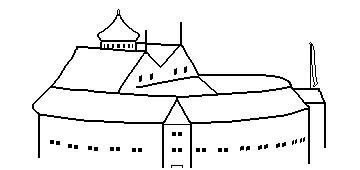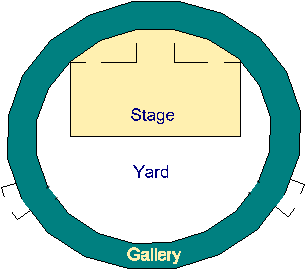
| Home |
| Gaynor |
| Mike |
| Art |
| Theatre |
| Shakespeare |
| Sam Beckett |
| Harold Pinter |
| Tom Stoppard |
| Globe Playh'se |
| Book Shop |
Advanced search

Original
|
|||||||||||||||||||||||||||||||||||||||||||||||||||||||||
|---|---|---|---|---|---|---|---|---|---|---|---|---|---|---|---|---|---|---|---|---|---|---|---|---|---|---|---|---|---|---|---|---|---|---|---|---|---|---|---|---|---|---|---|---|---|---|---|---|---|---|---|---|---|---|---|---|---|

|
|||||||||||||||||||||||||||||||||||||||||||||||||||||||||
Globe Excavation |
|||||||||||||||||||||||||||||||||||||||||||||||||||||||||
|
In 1989 a team from the Museum of London uncovered about five per cent of the foundations of the Globe in the car park behind Anchor Terrace on Southwark Bridge Road. The area excavated consisted of the foundations of one of the stair towers and the gallery to which it was attached. Position your mouse over the drawing below for a magnified view of the area excavated. |
|||||||||||||||||||||||||||||||||||||||||||||||||||||||||

The rest of the remains lie beneath the late Georgian building called Anchor Terrace which is listed for preservation, and a main road. Despite pleas from many people who want to know as much as we can learn about the original setting for those jewels of the English language and culture played here four centuries ago, English Heritage backed by the Government department concerned, the Department for Culture, Media and Sport, refused to allow further excavations. In reply to a letter I wrote to the department in 1998, a spokesman wrote: "The remains are being preserved in situ for future generations when, as a result of new techniques, we are likely to be able to derive far more information from archaeological deposits than is possible today, just as we can learn more now than was possible only 50 years ago." This seems to me to be an argument for never excavating any site, because we shall always be able to do it better in 50 years time.
If you want to know more about the 1989 Globe excavations, The Museum of London
has published a book detailing the findings at this site and at The Rose called
The Rose and the Globe: Southwark Excavations 1988-91
.
|
|||||||||||||||||||||||||||||||||||||||||||||||||||||||||
The Theatre Excavation |
|||||||||||||||||||||||||||||||||||||||||||||||||||||||||
|
In 2008 builders digging the foundations for a new theatre in Shoreditch in the north of the City of London discovered brick foundations of what is now believed to be The Theatre which was one of the first purpose built playhouses in London. James Burbage and his brother-in-law John Brayne built it in 1576 and some of Shakespeare's earliest plays were almost certainly performed here. In 1595 Shakespeare was a member of the Lord Chamberlain's Men based at The Theatre acting with Burbage's son Richard, and in the following few years he wrote The Merchant of Venice, A Midsummer Night's Dream and others for the Lord Chamberlain's Men to perform at The Theatre. In 1598 the timbers of The Theatre were removed to Bankside to build the Globe, as I describe here. A blog by the excavation team from The Museum of London is very interesting. |
|||||||||||||||||||||||||||||||||||||||||||||||||||||||||
|
|||||||||||||||||||||||||||||||||||||||||||||||||||||||||
|
|||||||||||||||||||||||||||||||||||||||||||||||||||||||||


